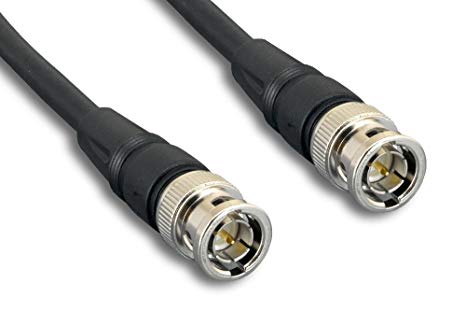Definition of thinnet in The Network Encyclopedia.
What is Thinnet?
Thinnet is the thin coaxial cabling used for 10Base2 installations of Ethernet networking. Thinnet cabling is RG-58 coaxial cabling that is 3/16 inch in diameter and has an impedance of 50 ohms. Thinnet uses BNC connectors to connect cable segments, computers, and concentrators (hubs).

Many older hubs, bridges, routers, and other networking devices have at least one thinnet port for connecting to 10Base2 networks. Thinnet was often used in the 1980s for workgroup or departmental local area networks (LANs); it has largely been replaced by unshielded twisted-pair (UTP) cabling.
Thinnet terminators
Thinnet cables must be terminated at both ends. If communication is down, check the termination points, and then check for loose BNC T-connectors attached to the computers on the network. Thinnet cabling can become damaged if it is sharply bent or twisted, so handle it carefully. (It is not nearly as fragile as fiber-optic cabling, however.)
One place where thinnet is still useful is in electrically noisy environments such as shop floors in factories, where electromagnetic interference (EMI) caused by motors, generators, and other heavy equipment can disrupt communication over UTP. Coaxial cabling, with its internal shielding, can easily withstand the noise.
Difference and similarities between Thinnet and Thicknet
Thicknet, also known as Thick Ethernet or 10Base5, and Thinnet, also known as Thin Ethernet or 10Base2, are obsolete Ethernet networking technologies. Both technologies use coaxial cable, which consists of solid copper core surrounded by an insulator; a shield of braided wire is wrapped around the insulator and a further insulator is wrapped around the shield to complete the cable.
Thicknet uses a type of coaxial cable known as Radio Grade 8, which conforms to the original Xerox Ethernet specification and has a diameter of approximately half an inch. Thinnet, on the other hand, uses a thinner type of coaxial cable known as Radio Grade 58, which is similar to the Radio Grade 6 cable used for cable TV.
Thicknet cable is expensive and difficult to work with. Each Thicknet segment must be terminated with a 50 ohm terminator to prevent reflection of the signal from destroying the data. If a Thicknet cable breaks, data transfer to the whole network stops. Thinnet is cheaper and easier to work with, but also requires termination and any break brings the entire network to a halt. Thinnet was popular for home and small business networks in its time, but, like Thicknet, is no longer used for modern networks.